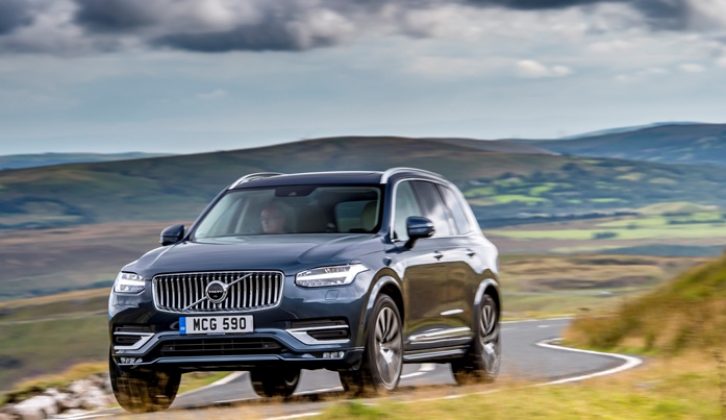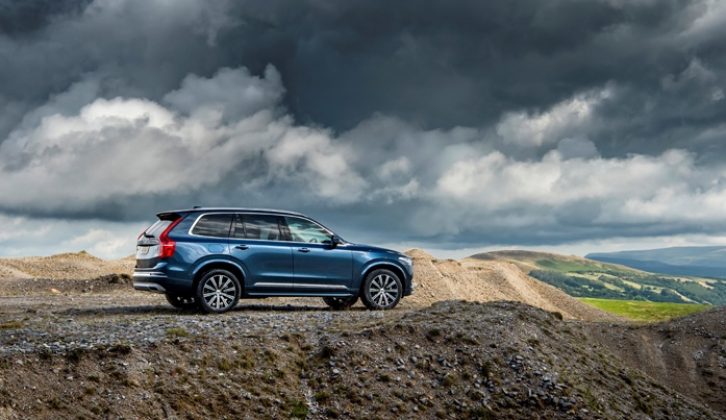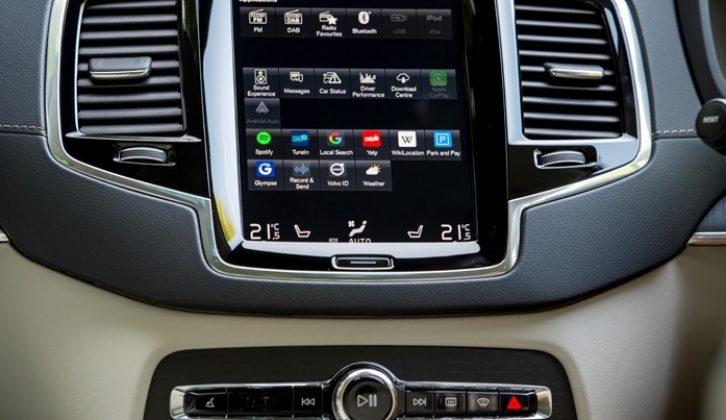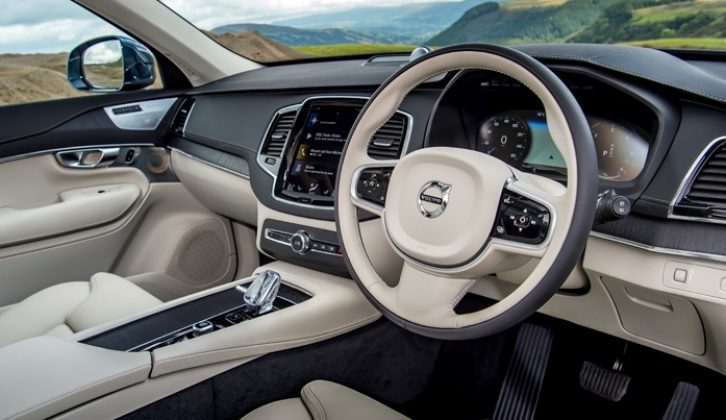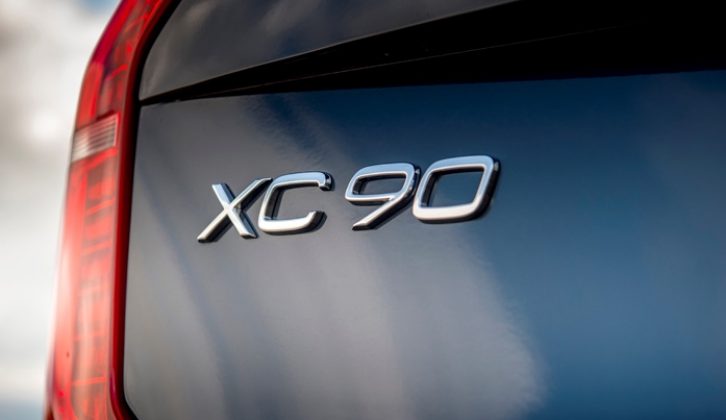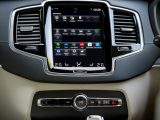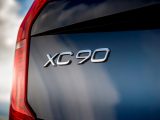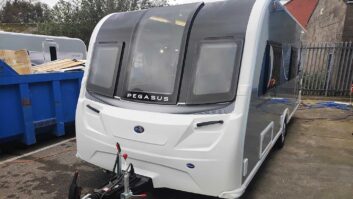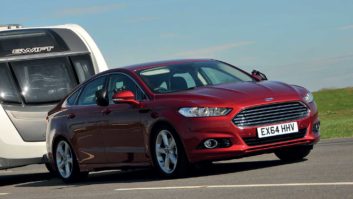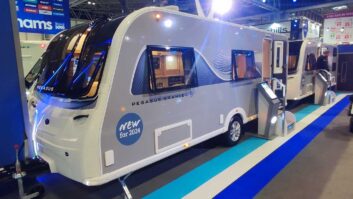The Swedish brand plans that half the cars it sells should be fully electric by 2025; all others will feature battery power in one form or another.
The number of hybrids Volvo offers is already increasing. Take the updated XC90 range as an example. In addition to the powerful T8 plug-in hybrid, the revised XC90 range now features a ‘mild’ hybrid, the B5.
What’s a ‘mild hybrid’ car?
If you’re wondering what’s meant by a mild hybrid, it’s a term for cars that use a 48-volt battery and an integrated starter-generator. Energy from the battery is used to assist acceleration, or to power ancillary systems like the stereo or headlights. The battery can’t propel the car on its own, but it does deliver a fuel economy saving of 15%, according to Volvo. When slowing down, a Kinetic Energy Recovery System (KERS) recharges the battery. The car still has a 12-volt battery and starter motor to start the car at the beginning of a journey.
The XC90 B5 has some very impressive economy and emissions figures for such a big and heavy car. The official combined WLTP economy figure is 37.7-44.1mpg, and emits 154-156g/km of CO2. That compares with 28.3-31.5mpg and 198-202g/km for a Land Rover Discovery SD6.
The mild hybrid’s efficiency doesn’t come at the expense of its on-paper towing stats, with a legal towing limit of 2700kg. The mass in running order is 2172kg, giving an 85% match figure of 1846kg.
What’s the ride like?
There’s every sign the B5 will prove a very able tow car. The ride can feel a little firm on poorly surfaced B-roads, but the suspension keeps the big car well controlled. Numb steering takes fun off the menu – keen drivers will prefer the BMW X5 – but as a high-speed express the XC90 is as impressive as ever.
From cold the four-cylinder diesel engine is a tad clattery, but once warm it settles into the background. It doesn’t sound as good as the six-cylinder diesels in some rivals, but there’s no arguing with the engine’s efficiency, especially now it has the gentle assistance of the 48-volt hybrid system.
From behind the wheel you really don’t notice the system at work, other than when the engine stops and starts again.
Adding an improved automatic gearbox
Another change for the updated XC90 is an improved automatic gearbox. It seems keener to change gear when you’re in a hurry, and it shifts smoothly at low speeds whereas the old ‘box was occasionally clunky.
The revised car also gains drive-by-wire braking, which is impressively high-tech but offers very little feel through the brake pedal. The power to stop the car is there but it needs a good shove to slow the XC90 rapidly.
For most caravanners, the B5 is more than quick enough, with a 0-62mph time of 7.6 seconds. However, if you prefer your hybrids hot rather than mild, there’s also an updated version of the T8 Twin Engine plug-in hybrid.
The most significant change is the addition of a larger capacity battery, which means the T8 can now go further on electric power alone. According to the WLTP test cycle, Volvo’s heavyweight plug-in will now travel just under 29 miles without waking up its petrol engine.
A quick, quality-made tow car
When both are on-song, this is a very quick car – Volvo says it will go from 0-62mph in 5.8 seconds. And we know from towing with the pre-facelift model at the Tow Car Awards in 2017 that it’s a very capable tow car, winning the ‘Best Hybrid’ award.
Speed is matched to serious heft, with a mass in running order of 2329kg, which gives an 85% match figure of 1980kg. The legal towing limit is 2400kg.
There are downsides to choosing the plug-in hybrid over the mild hybrid diesel. The first one is price. Costing from £66,645, the T8 costs over £10,000 more than the B5 in the same spec. What’s more, all those hybrid components take up space, reducing the luggage space with five seats upright to 640 litres rather than 680 litres.
We’d consider the T8 if we had a short commute, and could largely run the car on electric power for most journeys. Otherwise the B5 offers many of the same qualities at a more affordable price.
As before the facelift, one of those qualities is, well, quality. This is a superbly made car. The cabin design is clean and minimal, and has hardly aged at all. If we have a criticism , however, it’s that the Sensus touchscreen system isn’t as easy to use as some, although the graphics look good and the size of the display is a big plus.
There are also some annoying gaps in the standard specification, with Apple CarPlay and Android Auto compatibility costing £300, when this is standard on many cars costing a fraction of the Volvo’s price.
However, despite one or two minor frustrations, these mid-life revisions keep the XC90 towards the top of the luxury SUV class.
We know from towing with the pre-facelift model at the Tow Car Awards in 2017 that it's a very capable tow car, winning the 'Best Hybrid' award
